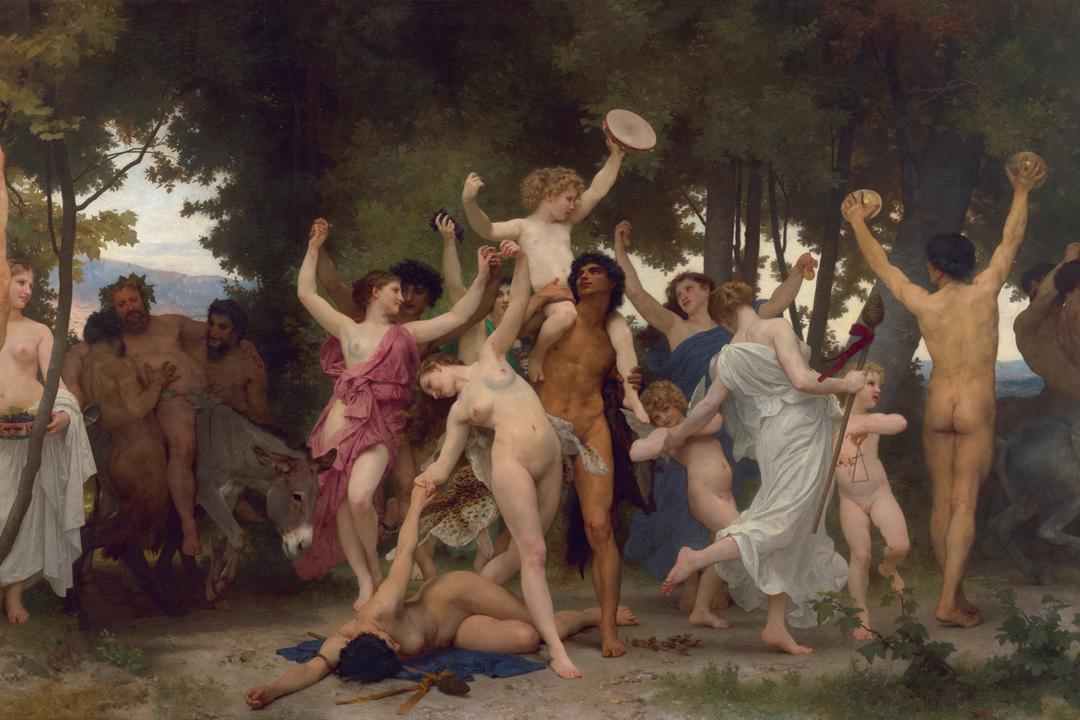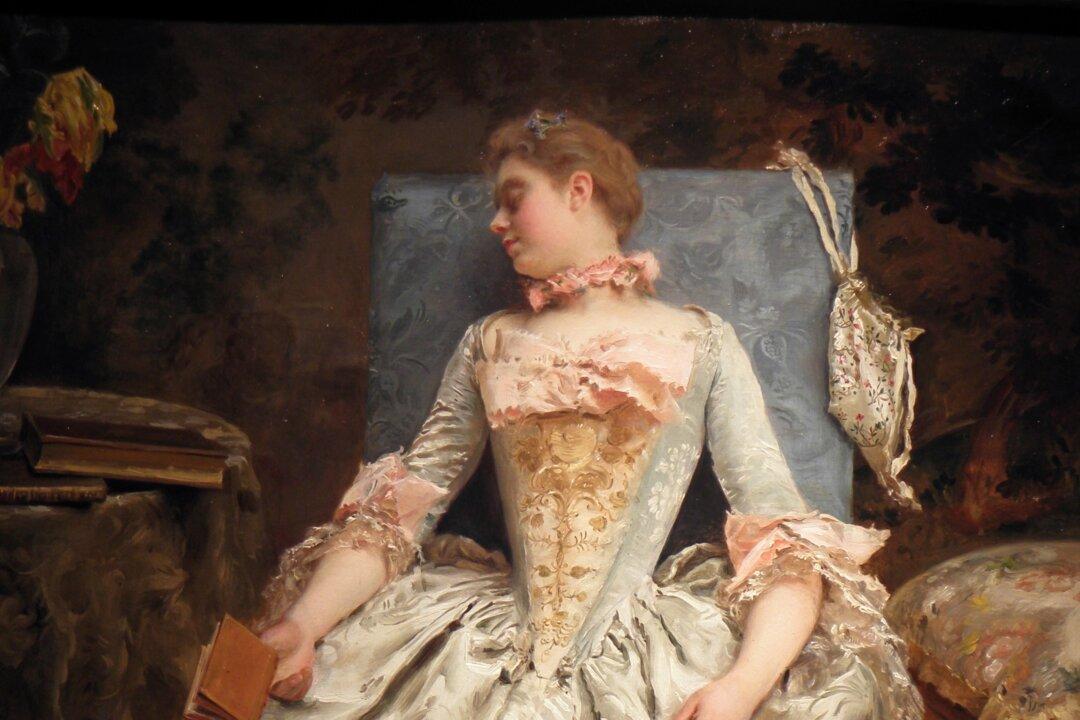George Elgar Hicks (1824–1914) is one of those artists, well appreciated among 19th century Victorian scholars, but virtually unknown to the general public of today. He was a prominent painter of his day, exhibiting 112 works at the Royal Academy (RA) by 1893.
In fact, out of the roughly 22,000 exhibiting artists in the principal exhibitions in London between 1760 and 1893, there were only 22 non-RA or ARA painters (excluding miniatures) who exhibited at the RA more than G. E. Hicks and only 90 painters in total who exhibited more, including RA and ARA members. It is also important to remember that in 1893 Hicks was still alive and painting. He is an artist whose importance is under recognized and whose talent is still evident in the 21st century.
Although Hicks painted many portraits, he was better known for his genre pictures and scenes of Victorian life. His color pallette for the most part was vibrant, as is to be expected of Victorian art, and he experimented with different painting styles, some looser and more impressionistic in the background, as in his work titled “Buttercups,” and others extremely tight and pre-Raphaelite as in “Woman’s Mission: Companion of Manhood.” Although Hicks focused on figures, not only his style, but also the subjects he depicted varied dramatically throughout his life.
Early on in his career his work resembled that of the crowd scenes of William Powell Firth and then it transitioned more into the style of the pre-Raphaelite brotherhood (PRB) and also, into the looser, later, non-pre-Raphaelite works of John Everett Millais. This is not necessarily meant as a criticism. If anything it points to his ability to keep with the times and shows his aptitude in depicting a wide set of subjects, which vary from field hands, to upper society, to crowds, to contemplative youth, to Bouguereauesque images of mothers with their children.
As the son of a Hampshire magistrate, Hicks was from a family of means. His parents wanted him to become a doctor and he went to school for this from the ages of 16 to 18 at the University College Schools. However, this was not what Hicks wanted and by 1843 attended school at Sass’s Academy, Bloomsbury, followed by the Royal Academy Schools starting in 1844. Hicks was married to Maria Hariss in 1847 and moved with his swiftly growing family and servants to larger and larger homes in Notting Hill and Bayswater.
He fathered six out of his eight children between 1848 and 1854. In 1853 he published “A Guide to Figure Drawing,” which has been reprinted and the full text and illustrations are available online.
In the introduction to this book, Hicks discusses his thoughts on the human figure and figurative works of art, giving those interested in his work insight into his thoughts on art and man:
“The pleasure we experience in contemplating the unity of design, visible throughout the universe and the adaption of the function of every species of animal life to its appointed duty, becomes exalted when we turn our attention to the last and crowning work of creation, man. There we found the nature of capacity, although essentially perfect, yet circumscribed by purpose of its finite being; while in man the combined perfections of the animal functions are made subservient to the great purposes of his condition, and subject to the working of his intellectual powers, moral feelings and a never-dying spirit.
In this view the study of the human figure becomes both important and interesting. And although the training of the hand and mind in order to represent it may require much perseverance, let us look forward to the time when, the principles, having been learned, we shall be able, by the language of painting, to excite the sympathies and affections of others.”
Hicks has been most noted for his William Powell Firth inspired crowd scenes such as “Dividend Day, Bank of England” (1859), “The General Post Office, One Minute to Six” (1860), “An Infant Orphan Election at the London Tavern ‘Polling’” (1865), and “Billingsgate Market” (1870), which was the fish market. These crowd scenes became the subject of an exhibition at The Geffrye Museum in London in 1983 when it acquired his painting of a wedding scene titled “Changing Homes” (1862).
The exhibition included several of the major works listed above as well as numerous other works by the artist and additional family materials including his handwritten notebooks.
It is interesting to note that F.M.L. Thompson in History Today gave a positive review on the 1983 exhibition even though the work of the entire period was only first being reevaluated after a century of obscurity:
“What Hicks did was to begin to construct an urban myth which might tame the wild, unruly beast of the city; familiarize it, reader it rational, and orderly. He took scenes of bustling confusion, full of jostling, swearing multitudes of the lower orders, and reduced them – or raised them to images of sweet reasonableness. Moreover he showed crowds not as something potentially menacing, but as necessary gatherings operating the everyday mechanisms which kept London alive and functioning. They were to be respected, not feared. The middle classes knew what they wanted better than the art critics did. They liked Hicks’ pictures precisely because they departed from reality sufficiently far to be reassuring without taking the make-believe touch so far as to be transparently incredible. Here was a slice of London as they would have liked it to be, shaped in their own image.”
Most recently an exhibition on the author Charles Dickens and his relationship with London opened at the Museum of London in March 2012. The exhibition featured Hicks’s “An Infant Orphan Election at the London Tavern ‘Polling’” as a prime showpiece. The exhibition marked the 200th anniversary of the birth of Charles Dickens. The Grand Public Hall at St Martins-le-Grand post office was a popular tourist attraction described by Dickens in “Household Words,” published in 1850 and was the subject of Hicks’s “The General Post Office” 10 years later.





